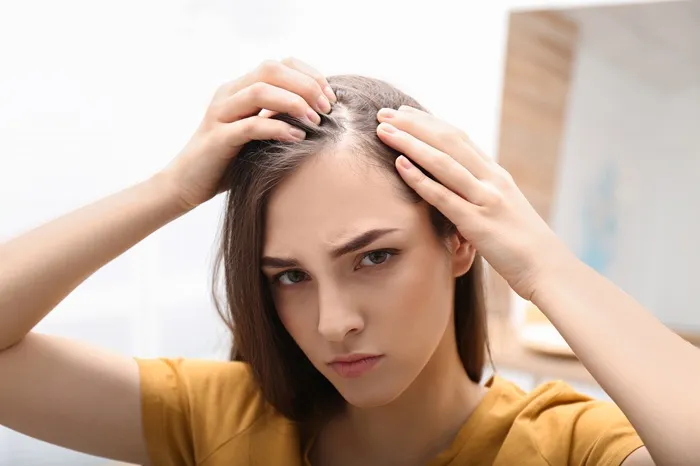A bad hairline can significantly impact one’s appearance and self-confidence. Whether it’s due to a receding hairline, an uneven or unnatural-looking hairline, or simply a hairline that doesn’t suit your facial structure, there are several options available to address and improve it.
This article will provide a detailed exploration of the causes of a bad hairline, the various treatment options, and practical steps you can take to achieve a more natural and aesthetically pleasing hairline.
Understanding the Hairline
The hairline is a crucial component of facial aesthetics, framing the face and influencing overall appearance. A natural, well-defined hairline can enhance facial symmetry and balance, while an uneven or receding hairline can make the forehead appear larger and more prominent, potentially leading to feelings of self-consciousness.
Causes of a Bad Hairline
Genetics: One of the most common causes of a receding hairline is genetics. Male pattern baldness (androgenetic alopecia) is a hereditary condition that affects millions of men and women worldwide. It is characterized by a gradual receding hairline and thinning hair on the crown.
Aging: As we age, hair follicles naturally weaken, leading to thinner hair and a receding hairline. This is a natural part of the aging process, but it can be accelerated by other factors.
Hormonal Imbalances: Hormonal changes, such as those experienced during puberty, pregnancy, or menopause, can affect hair growth and lead to a receding hairline.
Stress and Lifestyle Factors: Chronic stress, poor nutrition, and certain lifestyle habits (such as smoking or excessive alcohol consumption) can contribute to hair loss and a receding hairline.
Medical Conditions: Certain medical conditions, such as thyroid disorders or autoimmune diseases, can cause hair loss and affect the hairline.
Previous Hair Transplant Surgery: In some cases, a bad hairline may be the result of poorly executed hair transplant surgery. This can lead to an unnatural or uneven hairline that requires correction.
Assessing Your Hairline
Before deciding on a treatment plan, it’s essential to assess your hairline and determine the underlying cause of the issue. A consultation with a qualified hair restoration specialist can help identify the root cause and recommend the most appropriate treatment options.
Degree of Hair Loss: The extent of hair loss and the current state of your hairline will influence the treatment options available to you.
Hair Density: The density of your remaining hair will also play a role in determining the best course of action.
Scalp Condition: The health of your scalp can affect hair growth and the success of any treatment.
Aesthetic Goals: Your personal aesthetic preferences and desired outcome will guide the treatment plan.
Treatment Options for a Bad Hairline
Hair Transplantation
Hair transplantation is one of the most effective and permanent solutions for a bad hairline. This procedure involves relocating healthy hair follicles from a donor area (usually the back of the head) to the recipient area (the front hairline). The two primary techniques used are Follicular Unit Extraction (FUE) and Follicular Unit Transplantation (FUT).
Hairline Lowering Surgery
Hairline lowering surgery is a surgical procedure designed to physically move the existing hairline forward by reducing the height of the forehead. This method is particularly effective for individuals with a high hairline or significant forehead prominence.
Medical Treatments
Several medical treatments can help slow down hair loss and promote hair growth, potentially improving the appearance of
the hairline.
Scalp Micropigmentation
Scalp micropigmentation (SMP) is a non-surgical cosmetic procedure that involves tattooing the scalp to create the appearance of a full head of hair. This can be an effective option for individuals with thinning hair or a receding hairline.
Conclusion
A bad hairline can be a source of self-consciousness and frustration, but there are several effective options available to address and improve it. From hair transplantation and hairline lowering surgery to medical treatments and non-surgical options like scalp micropigmentation, there is a solution for every individual. By consulting with a qualified specialist, maintaining a healthy lifestyle, and exploring the available treatment options, you can achieve a more natural and aesthetically pleasing hairline.
If you are concerned about your hairline, it is essential to take proactive steps to address the issue. A consultation with a hair restoration specialist can help you determine the best course of action and guide you through the process to achieve the best possible outcome. Remember, patience is key, as some treatments may take several months to show visible results. With the right approach and care, a more balanced and youthful hairline is within reach.
Related topics:
- How to Get a Perfect Hairline Naturally: A Complete Guide
- 11 Bad Effects of Hair Transplant
- How to Get a Perfect Middle Hairline


